Native Plants
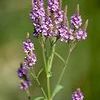
|
Common Name: Blue Vervain
Tall, narrow plants with erect branches and pointed, coarsely-toothed leaves hold loose clusters of small flowers on upright spikes. Flowers bloom through the summer months. This moisture lover occurs natually in wet prairies, low prairies and along ...
[ More Info ] [ Add to Shopping List ]
|
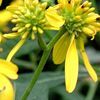
|
Common Name: Wingstem
This easily recognized wildflower appears on average to moist sites at the edges of woods and along roadsides from July to September. It is named for its unusual winged stems. Wing-stem can grow to a height of six feet, and the distinctive flowers ar...
[ More Info ] [ Add to Shopping List ]
|
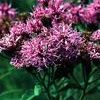
|
Common Name: Western Ironweed
Rounded, flat-topped branching clusters of red-violet flowers are held at the ends of stiff, upright stems. Plants and leaves of this drought-tolerant prairie plant are hairy and so are avoided by cattle and deer....
[ More Info ] [ Add to Shopping List ]
|
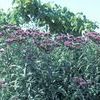
|
Common Name: Ironweed
Mid-summer to fall, tall stalks are topped with large, red-violet flowers that provide a wonderful display of color and attract butterflies. Dark green leaves are lance-shaped....
[ More Info ] [ Add to Shopping List ]
|
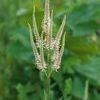
|
Common Name: Culver's Root
In late summer, distinguished, six-inch long, candle-like spikes of pinkish white flowers appear. Flowering persists for four to six weeks. A great selection for the garden and for cut flowers....
[ More Info ] [ Add to Shopping List ]
|
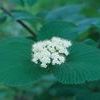
|
Common Name: Arrowwood Viburnum
In late spring, clusters of white, flat-topped flowers appear, followed by clusters of blue-black fruit that attract birds and other wildlife. The dark green, glossy leaves turn red, yellow or orange in the fall. Excellent for landscapes or conserva...
[ More Info ] [ Add to Shopping List ]
|
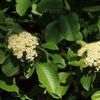
|
Common Name: Nannyberry Viburnum
An important food plant for winter wildlife. Fruits are deep-blue with a whitish coating. The fruits ripen in late fall and turn glossy when the coating wears off. The leaves, oval with a pointed tip, emerge a soft yellow-green that turn glossy dark...
[ More Info ] [ Add to Shopping List ]
|
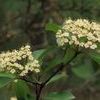
|
Common Name: Black Haw Viburnum
In spring, white flowers of flat heads appear and, in the fall, leaves turn a beautiful red color. The purple-black fruit taste like raisins and attract birds. For fruit set, two plants are required for cross-pollination. It can be grown as a multi...
[ More Info ] [ Add to Shopping List ]
|
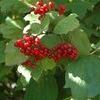
|
Common Name: American Cranberry
This hardy, deciduous shrub is not frost tender. Beautiful clusters of white flowers bloom in June, and the seeds ripen from July to September. The species is noted for attracting wildlife. The plant tolerates virtually any soils and can grow in heav...
[ More Info ] [ Add to Shopping List ]
|
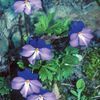
|
Common Name: Bird's Foot Violet
There's not very many plants that can take the hot dry baking sun that Viola pedata can take. 33 of our 50 states make a home for Viola pedata. And why do we call this charming little plant the "Birdsfoot Violet"? Well, just take a look at the dark g...
[ More Info ] [ Add to Shopping List ]
|
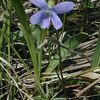
|
Common Name: Prairie Violet
This native perennial plant consists of a rosette of basal leaves, from which one or more flowering stems emerge. The basal leaves have a deeply lobed palmate structure, and are fan-shaped in appearance. The flowering stems are more or less erect, bu...
[ More Info ] [ Add to Shopping List ]
|
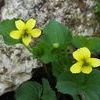
|
Common Name: Yellow Violet
Yellow Violet commonly occurs in meadows, low woods and bottomlands throughout the Midwest. Yellow flowers with purple veining on the lower petals appear in early spring on leafy stems. Stems and heart-shaped leaves are hairy as suggested by the comm...
[ More Info ] [ Add to Shopping List ]
|
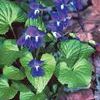
|
Common Name: Blue Violet
Noteworthy Characteristics:
Blue Violet is a common native wildflower which occurs in woods, thickets and streambanks. A stemless, low-growing perennial which features downy, basal, wide-heart-shaped leaves and large blue-violet flowers. Each flow...
[ More Info ] [ Add to Shopping List ]
|
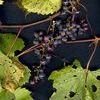
|
Common Name: Riparian Grapevine
A strong climber which can have over six feet of annual growth. Insignificant, fragrant flowers in June. Large leaves turn yellow in autumn. An undemanding, drought tolerant and fully hardy species. Recommended for covering tall fences and various su...
[ More Info ] [ Add to Shopping List ]
|
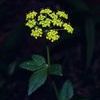
|
Common Name: Heart-Leaved Meadow Parsnip
This member of the carrot family blooms from May to June with flat heads of small yellow flowers. It provides wonderful contrast to other native plants in the landscape. The heart-shaped basal foliage is semi-evergreen, glossy and thick and looks sim...
[ More Info ] [ Add to Shopping List ]
|
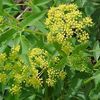
|
Common Name: Golden Alexanders
Pretty umbels of compound, golden yellow flower heads radiate on smooth, branched plants up to three feet tall. This striking member of the parsley family can be found from May to June along woodland borders and roadsides in our region. Commonly foun...
[ More Info ] [ Add to Shopping List ]
|
